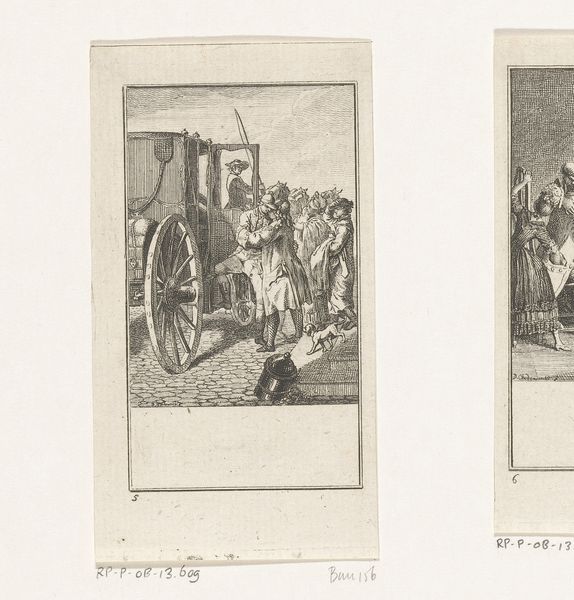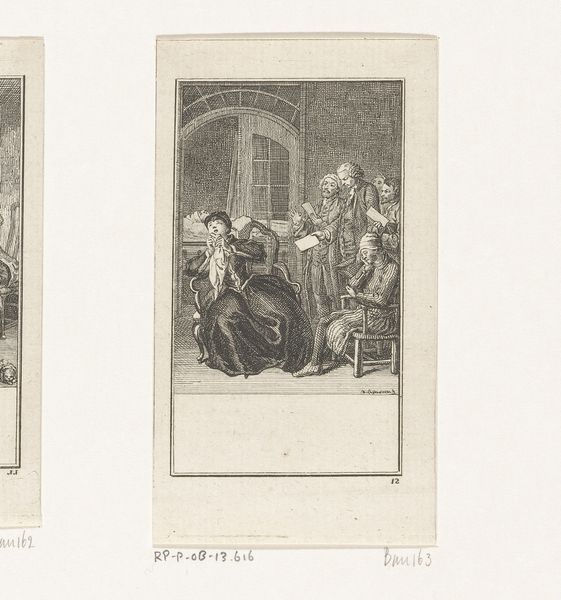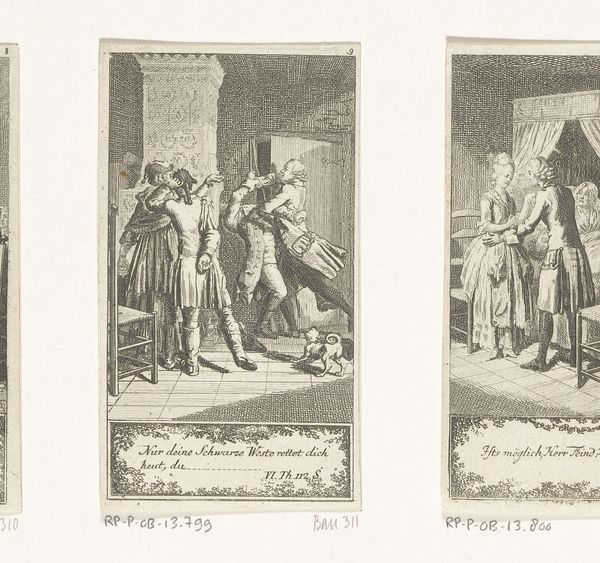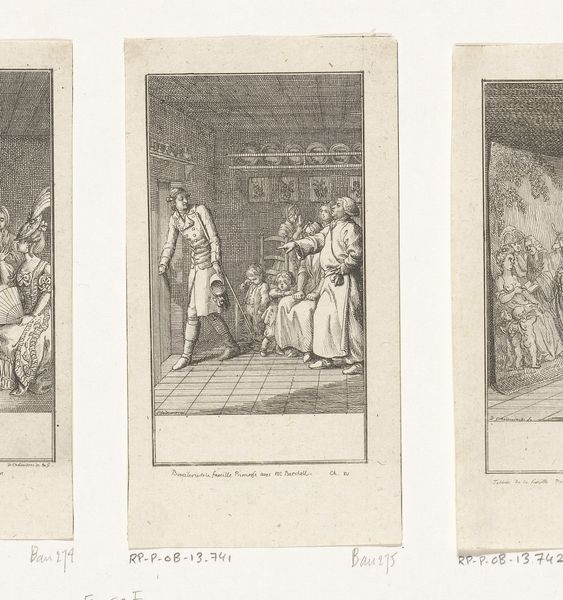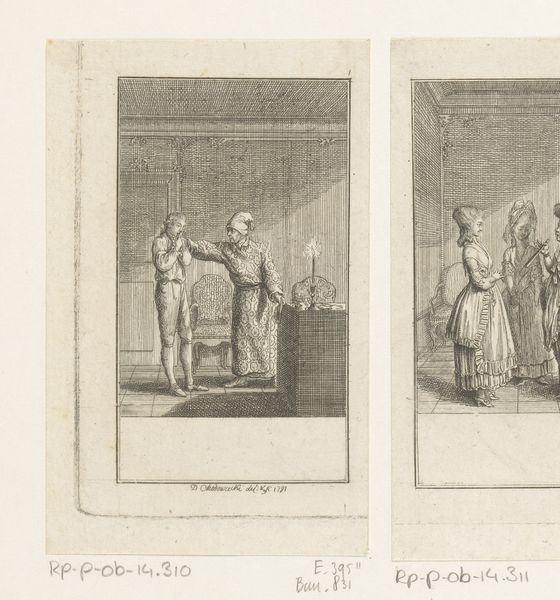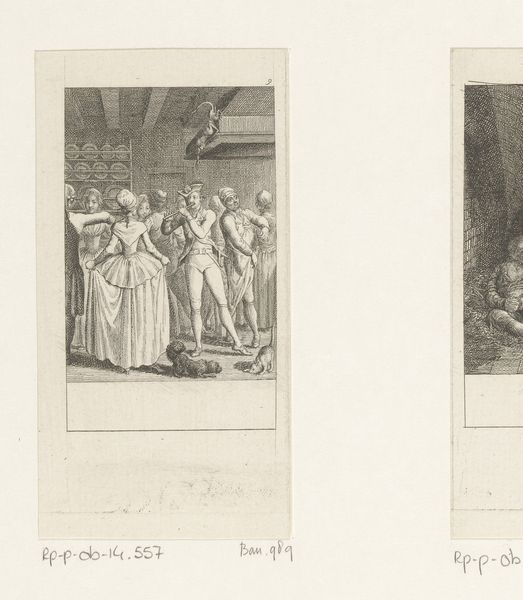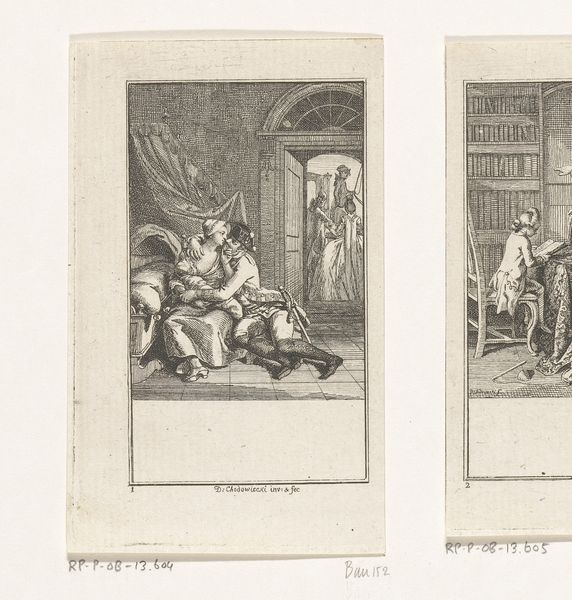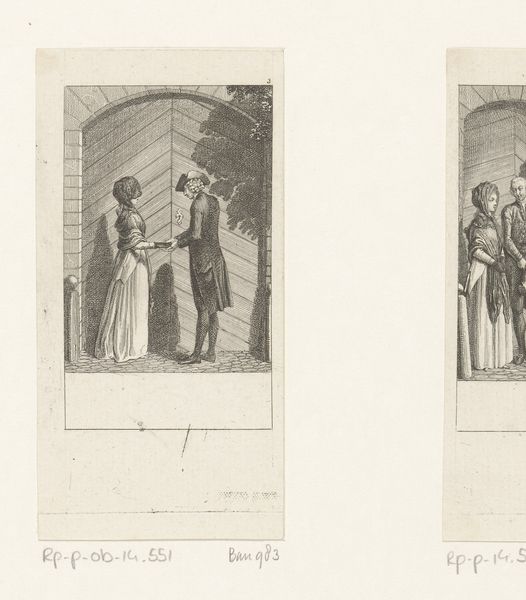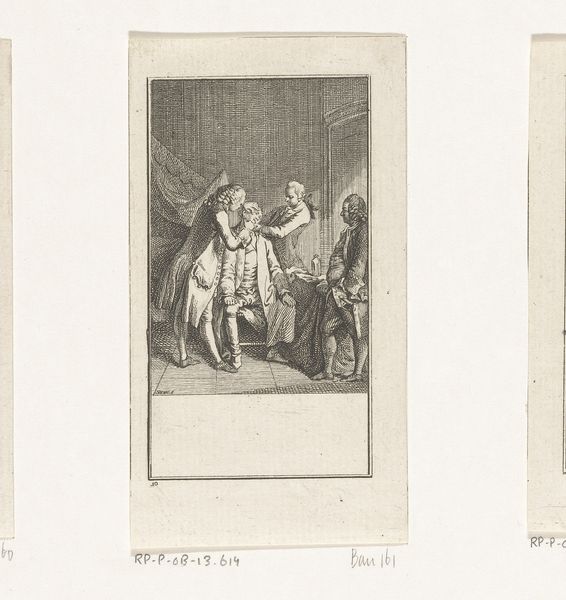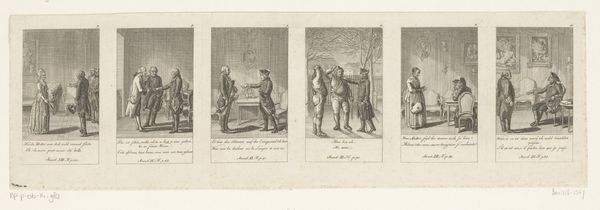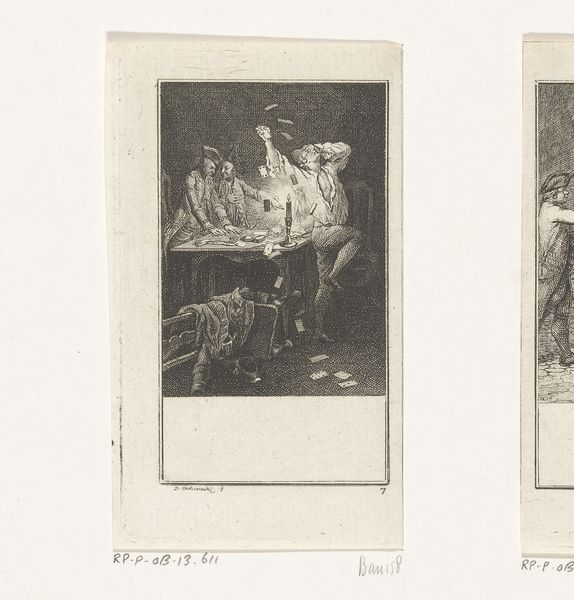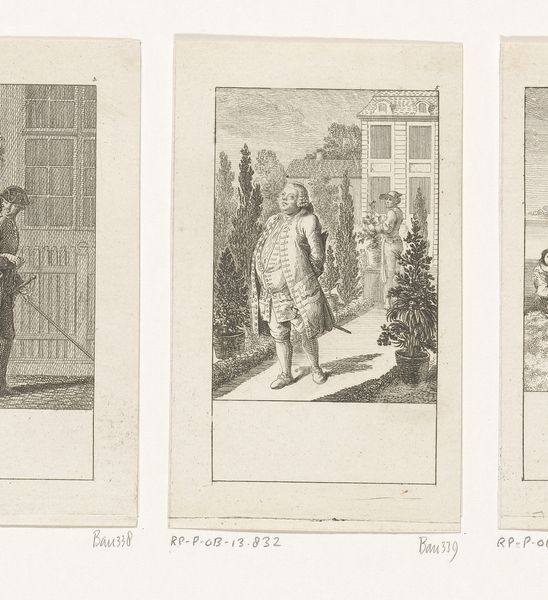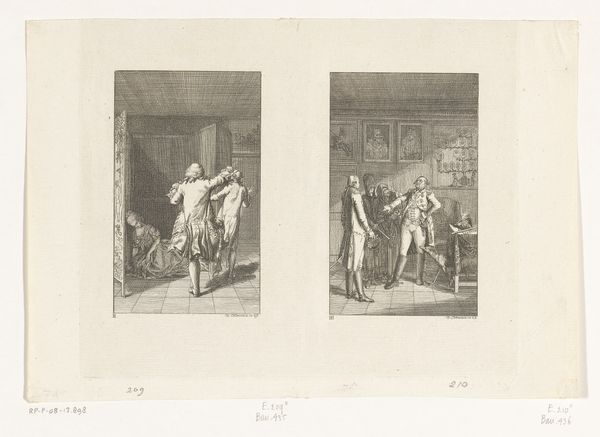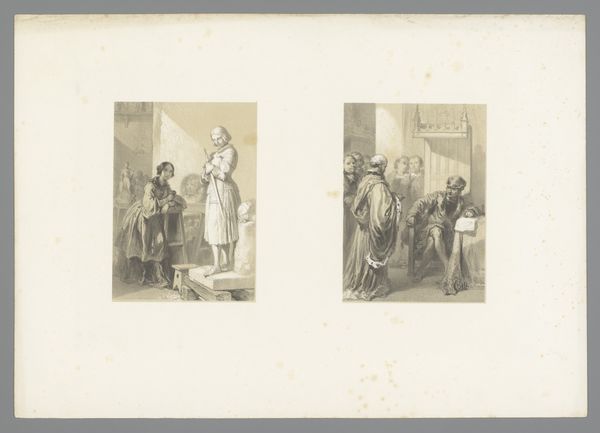
Dimensions: height 108 mm, width 62 mm
Copyright: Rijks Museum: Open Domain
Curator: Daniel Nikolaus Chodowiecki created this engraving, etching, and graphic art piece titled “Aanleiding tot eenzaamheid en overdenking,” which translates to “Cause for loneliness and reflection,” around 1773. What strikes you initially? Editor: It’s unsettling, almost a sense of clandestine violence hanging in the air. The stark blacks and whites emphasize the raw emotion—the figures appear caught in a moment of intense struggle. Curator: The material process is particularly fascinating. Chodowiecki was a master of the etching technique, allowing him to produce incredibly detailed and precise lines. Considering the print medium, how do you think this impacts the dissemination of the work? Editor: It's reproducible, making it accessible to a wider audience, effectively democratizing the image and the themes it represents. Looking closer, the subject feels very much like a stage production about gendered power. Curator: Absolutely. He challenged conventional boundaries. While ostensibly a historical scene, this composition offers a critique of social relations of the era. Note the clothing and accouterments— the material signifiers of class are hard at work. Editor: That context is key. This historical period witnessed rising social tensions and challenges to authority. The piece becomes a commentary on power dynamics. I see figures poised in an alley under what looks like a family crest, as one man has been seized by two others, while the fourth figure throws back his head. Curator: How do you read this depiction of conflict within the social landscape? It certainly draws heavily from Baroque drama, emphasizing moments of heightened emotional intensity. Editor: Considering theories around performativity and conflict, I read it as highlighting societal fractures, even male aggression. The act is occurring near that crest and that figure near the doorway has his face hidden. Curator: Seeing it now through your framework adds to our understanding. Focusing on materiality, the way he employs those hatching techniques builds tension; you feel it across class divides of the late 18th century. Editor: Indeed. Analyzing social and historical narratives offers enriching readings. What this piece shows me is not just what the art represents but its relationship to gender and other contemporary forms of injustice, how we can unpack their relevance across different populations. Curator: It’s powerful to view historical craftsmanship as a means for social change; both interpretations bring such resonance. Editor: Seeing how this work functions—from process to production—sheds light not only into what has changed in print media but how it endures as a method of critical exploration.
Comments
No comments
Be the first to comment and join the conversation on the ultimate creative platform.
